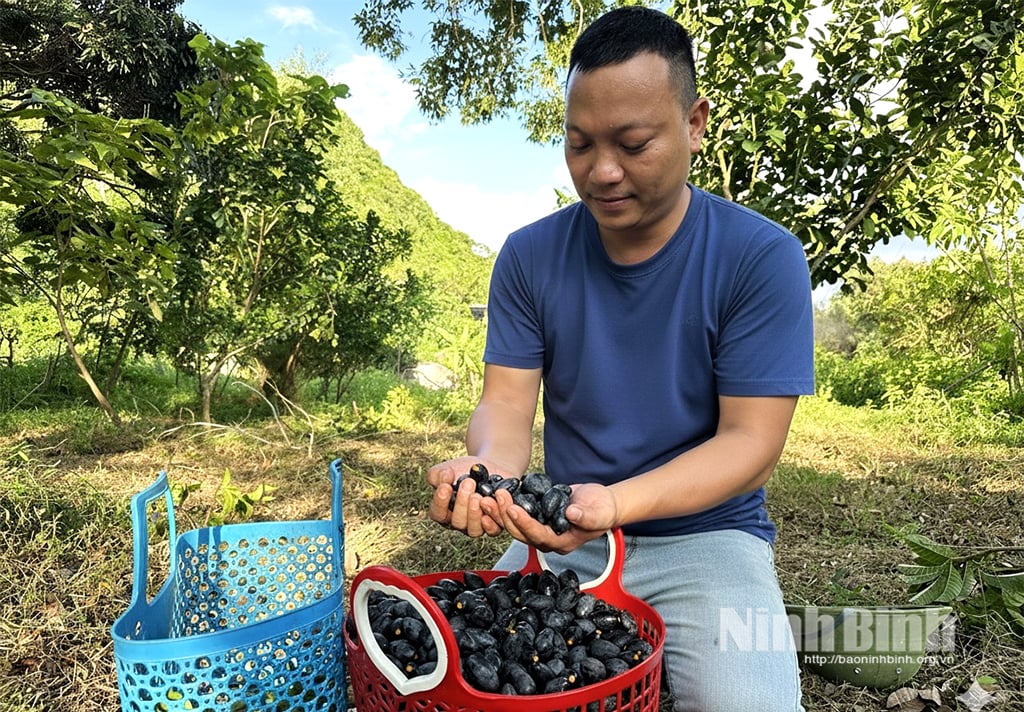
The keeper of the hundred-year-old trees
Following the road leading to Ao, Ca, Sau villages (formerly Ky Lao village), Phu Long commune, we came across ancient, towering Bui trees. Each cluster of plump, shiny fruit, hidden above the green canopy, contained many stories about the cultural traditions and vitality of the people here.
Mr. Dinh Thai Hoc, a son of Sau village, is extremely proud when talking about the towering Bui trees in his garden. He shared: “From my grandparents' time until now, my family has maintained and cared for 7 ancient Bui trees, including a rare green Bui tree; all of which are nearly a hundred years old. Ever since I was a child, I have looked up at the Bui trees towering up to the blue sky and believed that this land is the cradle that produces the most delicious Bui fruits.”
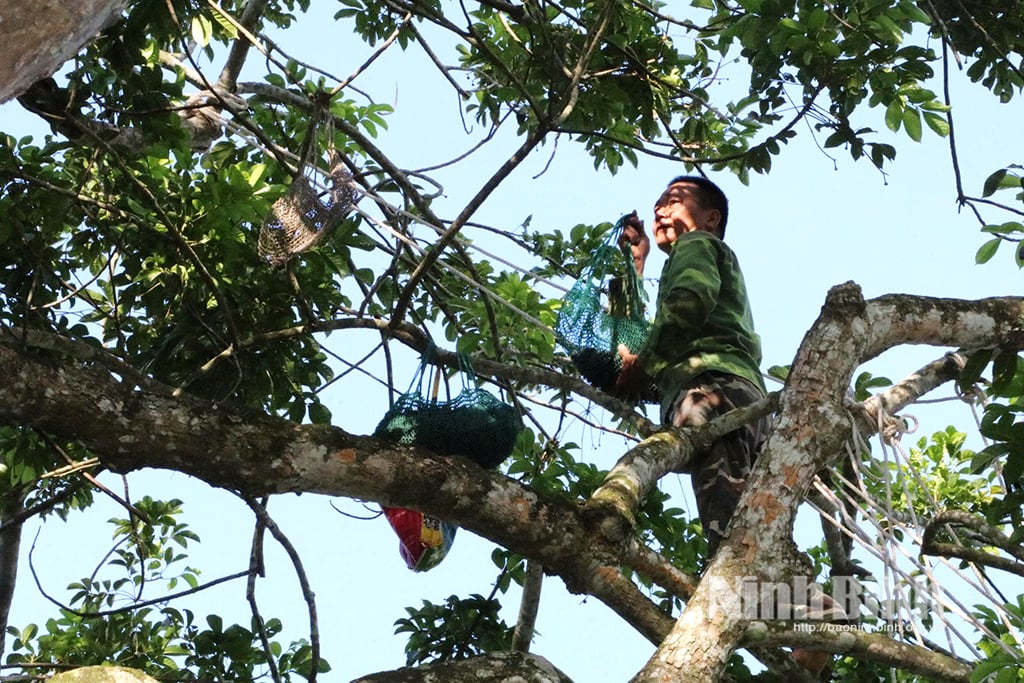
He added that the trees here grow naturally. People only clear the grass around them to give them the conditions to grow, without planting or fertilizing them. “The older they are, the better the fruit,” Hoc affirmed. This year, each of his family’s trees yielded about 10,000 fruits.
Mr. Hoc also explained the difference between the two types of Bui: Bui dem (black Bui) has black fruit, while Bui ngay (green Bui) has green fruit. Green Bui is a bit smaller but has a richer and more flavorful taste. Therefore, the price of green Bui is twice as high as black Bui, up to 300,000 VND/100 fruits compared to 150,000 VND/100 fruits of black Bui.
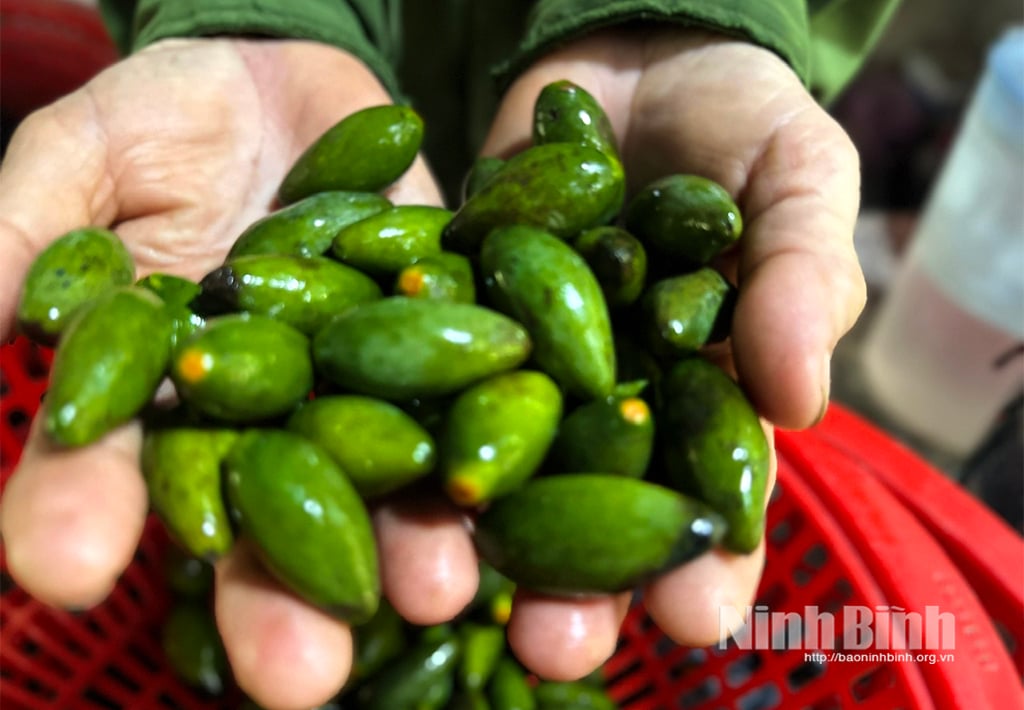
Mrs. Dinh Thi Y in Ca village is also one of the few lucky people in Phu Long who still keep the old Buoi trees in their garden. Talking to us, Mrs. Y's distant eyes reminded us of a time of poverty: "In the past, the life of the people in my hometown was very difficult. Rice was scarce, we had to rely on the mountains and forests to find food. Buoi fruits at that time had to be stewed very carefully, stored carefully to be used as a food supplement with corn, potatoes, and cassava to eat all year round, as a source of life that has nourished many generations of us."
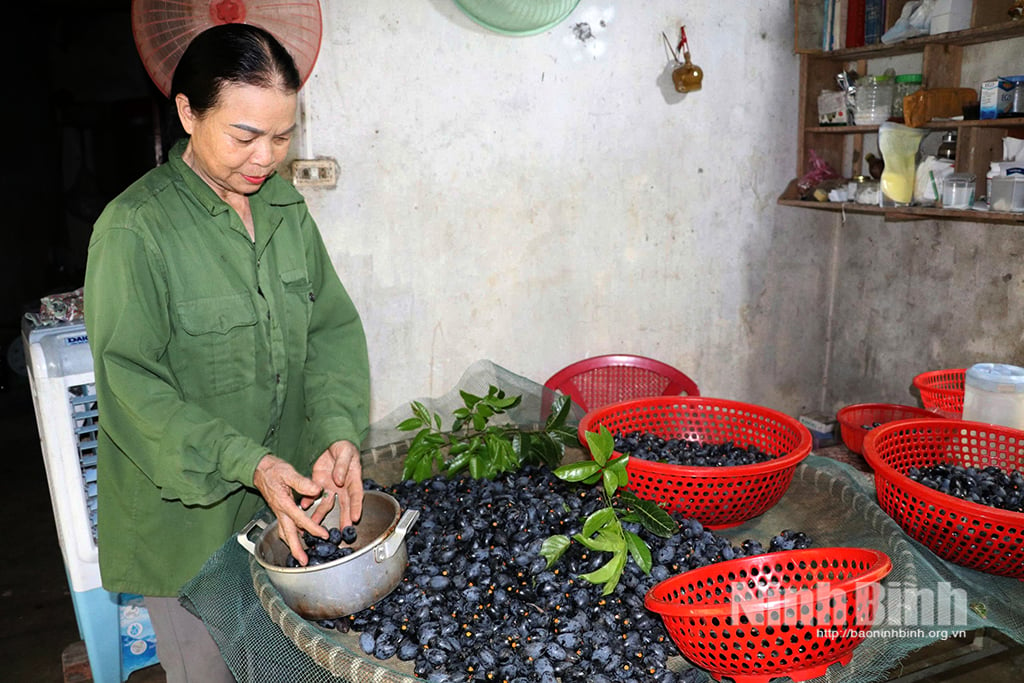
For Ms. Y, the Bui fruit is not only a dish but also a symbol associated with the cultural tradition of the Ky Lao people. She shared: “Today, in the ancestral altar on the 15th day of the 7th lunar month every year, in addition to wild bamboo shoots, there must be a Bui dish. Sometimes it is just a bowl of braised Bui, but sometimes it is more elaborate, making Bui sticky rice or Bui salad, all of which express the wish for a year of favorable weather, warmth, and abundance.” She proudly affirmed: “Bui Ky Lao has been famous since ancient times for its distinctive characteristics that only the most discerning people can recognize. When ripe, the fruit stem here is bright yellow, not dark. When braised, the flesh is rich, fatty, and flavorful without being hard or astringent.”
Picking the precious Bui fruits requires special skills. Dinh Van Dung and Dinh Van Dan, owners of nearly 70 ancient Bui trees in Ao village, are the most experienced. With their skillful climbing skills, they not only harvest for their families but also work for other households with a salary of 700,000 VND to 1 million VND/day.
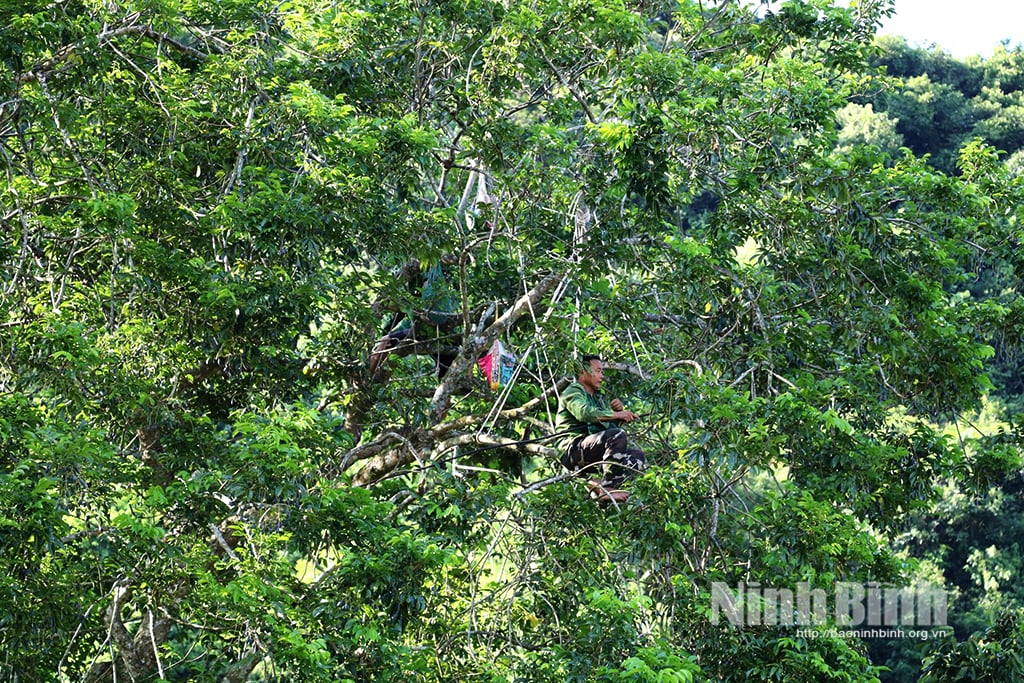
Mr. Dung said that the way to pick the fruit in Ky Lao is very different from other regions: Like other regions, they climb up and cut down the branches or use sticks to beat them and then spread a tarp to catch them. But doing so will make the fruit lose its deliciousness. Our way is to climb up to pick each fruit one by one, because when the fruit hits the ground, it loses its sap, and when it loses its sap, it loses its fragrance and richness. That is why we must cherish each fruit.
The locals also revealed special experiences in preserving and processing Bui. They shared that right from the preservation stage, they had to be very careful: “The tools used to store Bui are very selective. Bui must absolutely not be put in plastic bags or sealed objects, but must be kept in baskets or breathable mesh bags to avoid generating heat that causes the fruit to ripen quickly.”
After picking, the Bui fruit is washed and processed. A Muong ethnic person explained: “The Kinh people often call it om, uong, but we Muong people call it am.” This name comes from the cooking method: after washing, the Bui fruit is put into a pot, put on the stove and stirred with hands. When the hand feels warm, turn off the stove or put it on the ground for about 5 minutes. Then, they check by pressing the fruit with their fingernails, if the flesh is soft and cooked, pour it into a basket to drain. The ripe fruit is eaten first, the dry fruit will ripen later.
Bringing the taste of the great wilderness far and wide
Nowadays, the remaining ancient trees have become "precious and rare treasures". It is known that in the commune today there are only about There are 200 ancient local black bui trees, and only a handful of green bui trees, concentrated in Sau, Ca, Ao and Met villages. Bui Ky Lao is not only a dish but also a main source of income, helping many families in the village have a comfortable life.
Buoi fruit is sold by counting the fruit, 150,000 VND/100 fruits. A Buoi tree with many fruits can yield 10,000 fruits/year, bringing in 10-15 million VND. Families with about ten Buoi trees are sure to have hundreds of millions of VND in their hands. Dung and Dan alone harvest nearly 300,000 fruits each year, equivalent to an income of more than 400 million VND.
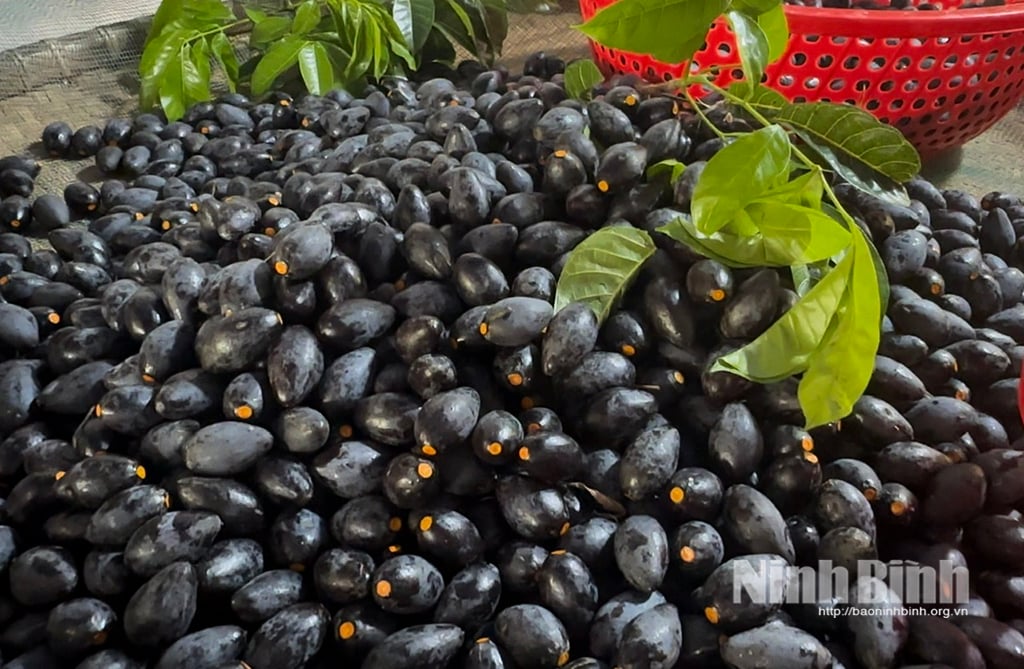
Although it brings high economic value, expanding the area of Bui tree cultivation is not easy. Mr. Dinh Thai Hoc said: It takes nearly ten years for a Bui tree to grow from seed to fruit and a few more decades for stable productivity. In addition, this type of tree has both male and female trees, not all trees bear fruit. Like his family, when he saw the economic value of Bui tree, since 2016 he planted about 100 Bui trees, but until now only a few trees have fruit.
Phu Long Commune, with its mountainous terrain, is very suitable for the natural development of the Bui tree. Bui trees do not like much fertilization, which is suitable for the traditional farming practices of the people. Therefore, developing Bui trees is a sustainable direction and suitable for the local soil and climate conditions.
However, to fully exploit the potential, the development of Bui trees needs to be linked with scientific research and in-depth processing. Currently, Phu Long commune is making efforts to preserve and develop this special Bui seed source by coordinating with specialized agencies and scientists to research and test high-quality grafted seedlings, in order to shorten the fruiting time and provide appropriate intensive cultivation processes.
In addition, diversifying products from the fruit is also an important direction. Besides traditional dishes such as stewed fruit, sticky rice and salad, the locality is researching more deeply processed products to increase value.
Finally, branding is the key factor to bring Ky Lao Bui fruit further. Ky Lao Bui is considered a potential agricultural product for Phu Long commune to develop into an OCOP product (One Commune One Product Program). The commune is actively building a review profile so that the product can soon be "starred and numbered". At that time, the product will be known to more consumers, contributing to increasing the value of agricultural production, raising income for people in the mountainous areas and preserving the homeland's specialties.
Source: https://baoninhbinh.org.vn/bui-ky-lao-bau-vat-cua-dai-ngan-251003105817428.html


![[Photo] General Secretary To Lam attends the 8th Congress of the Central Public Security Party Committee](https://vphoto.vietnam.vn/thumb/1200x675/vietnam/resource/IMAGE/2025/10/4/79fadf490f674dc483794f2d955f6045)

![[Photo] Solemn opening of the 8th Congress of the Central Public Security Party Committee, term 2025-2030](https://vphoto.vietnam.vn/thumb/1200x675/vietnam/resource/IMAGE/2025/10/4/f3b00fb779f44979809441a4dac5c7df)

![[Photo] Bustling Mid-Autumn Festival at the Museum of Ethnology](https://vphoto.vietnam.vn/thumb/1200x675/vietnam/resource/IMAGE/2025/10/4/da8d5927734d4ca58e3eced14bc435a3)



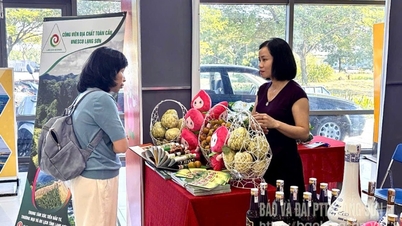

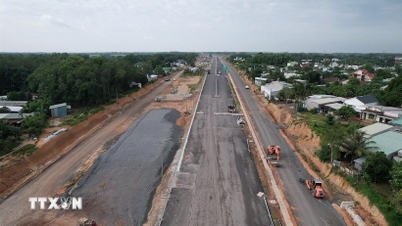

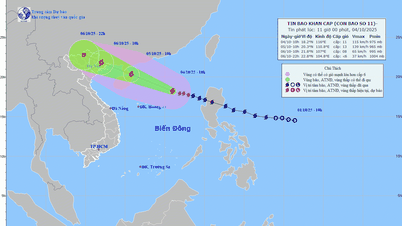








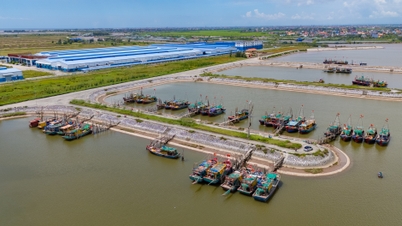
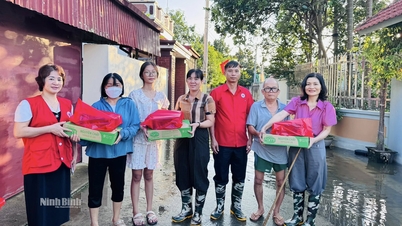
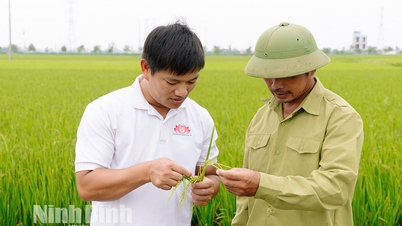
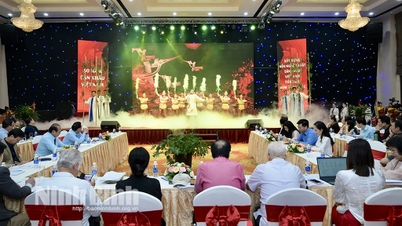
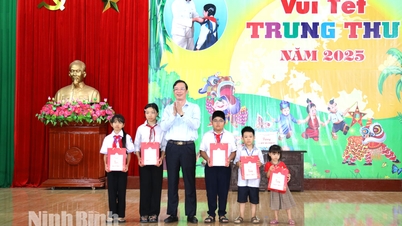
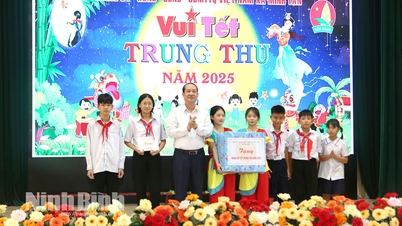




























![[VIDEO] Summary of Petrovietnam's 50th Anniversary Ceremony](https://vphoto.vietnam.vn/thumb/402x226/vietnam/resource/IMAGE/2025/10/4/abe133bdb8114793a16d4fe3e5bd0f12)
![[VIDEO] GENERAL SECRETARY TO LAM AWARDS PETROVIETNAM 8 GOLDEN WORDS: "PIONEER - EXCELLENT - SUSTAINABLE - GLOBAL"](https://vphoto.vietnam.vn/thumb/402x226/vietnam/resource/IMAGE/2025/7/23/c2fdb48863e846cfa9fb8e6ea9cf44e7)




















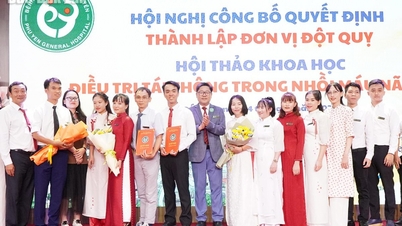
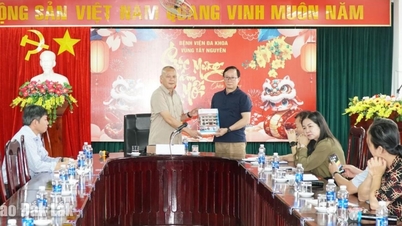
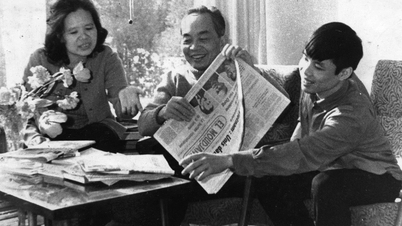
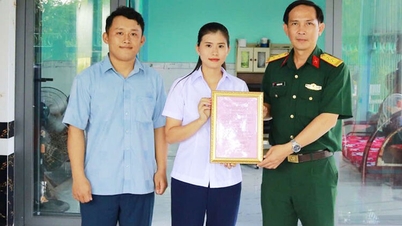






Comment (0)